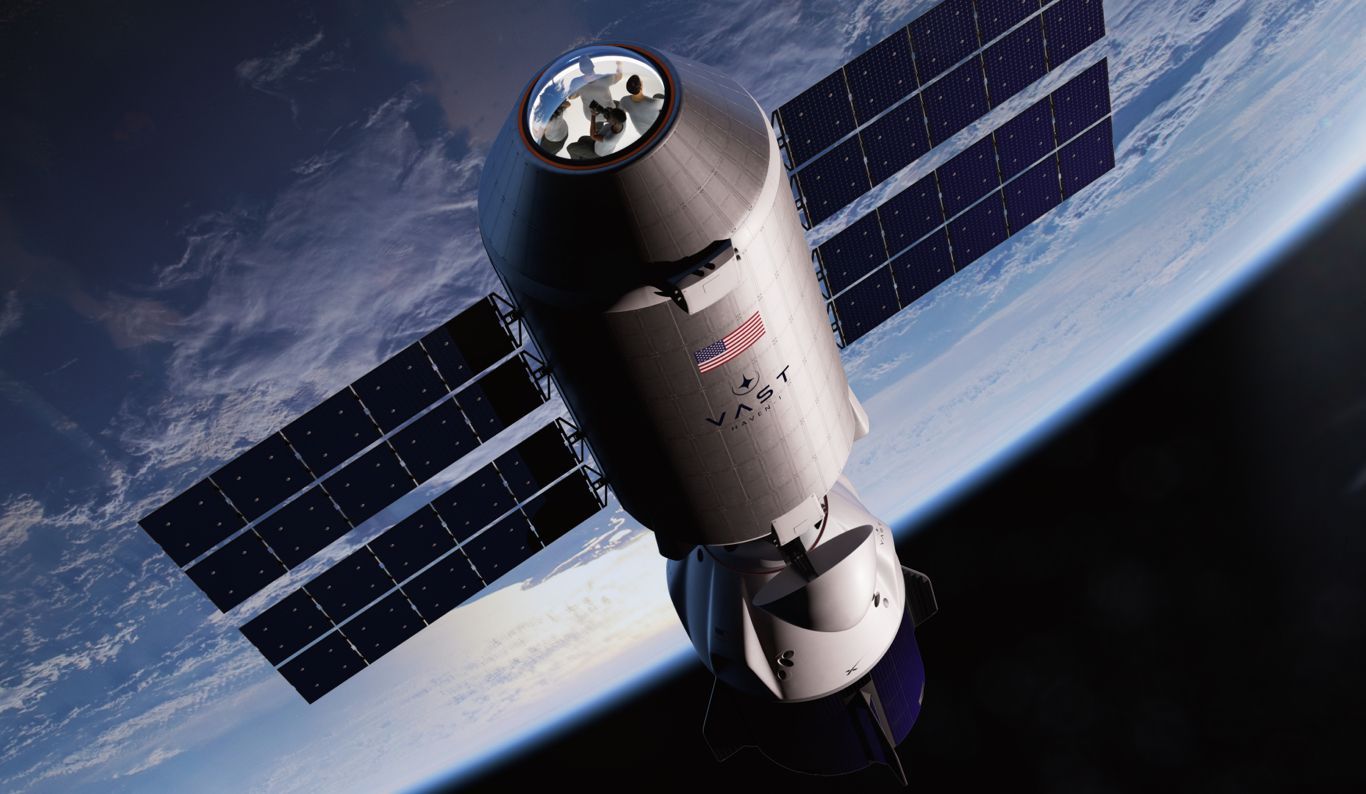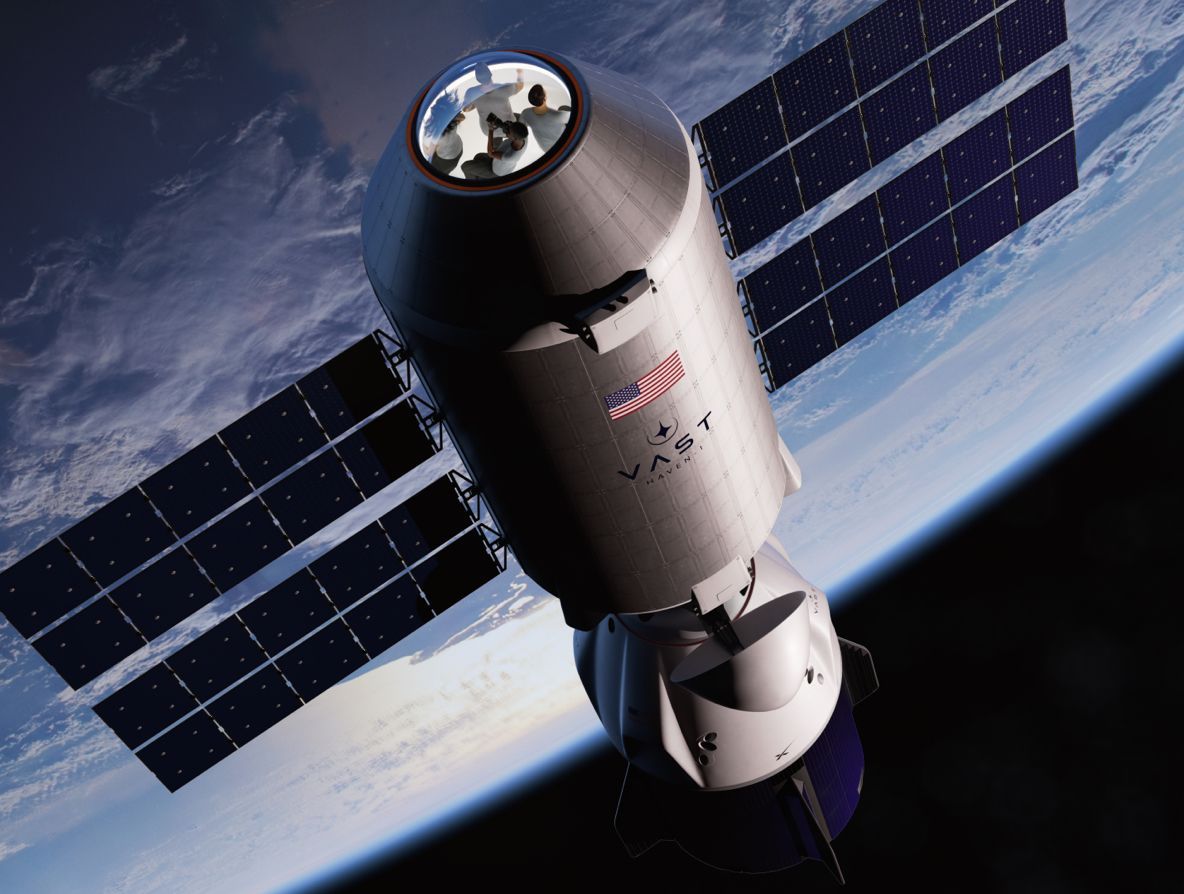12 May 2023
Rocket startups forge their own path, efforts ramped up in outer space exploration - Space News Roundup

(Image:Adobe)
Over the past couple of weeks we’ve discussed the impact that SpaceX’s Starship will have on the market, and noting its massively increased payload, what threat it poses to smaller rocket startups. An opinion article from Space News this week also discussed additional threats facing the launch market, highlighting the bankruptcy filing of Virgin Orbit, and stock exchange delisting notices for companies such as rocket manufacturer Astra and space tug company Momentus. It seems that despite continued all-round growth, the industry still faces challenges.
However, this week we have also seen evidence of ongoing competition in the launch and orbital vehicle market. Smaller companies may be finding a new role for themeless in the industry, despite the emergence of starship, while geopolitical considerations may also still be playing a role in how companies and nations source their launch partners.
This week has also seen plans move forwards for New Space and outer space exploration, including the development of new orbital crewed stations, plans for asteroid relay missions, in-situ resource utilisation and debris removal. It’s generally understood that scheduled mission dates will often slip, as technological hurdles are challenged and overcome. However, as competition increases, could we see some milestones arrive sooner than expected?
A lot to come in the launch market
A key reason behind the success of SpaceX, and the anticipated success of Starship, is reusability, dramatically increasing efficiency and reducing cost. These factors will be key especially when sourcing private customers. This week China’s mystery reusable spaceplane landed after spending 276 days in orbit. Developed by China Aerospace Science and Technology Corp. (CASC), the mission was reportedly seen as a success in the their particular quest to explore reusability. They had also released an object from the vehicle last year, which was tracked by the US Space Force, and stayed in close proximity.
Additionally, Chinese launch startup, Galactic Energy, are making progress with their reusable rocket technology, and are looking to manufacture a vehicle similar to SpaceX’s Falcon-9. The Pallas-1 rocket will be capable of carrying 5,000 kg into low Earth orbit (LEO). Also looking to challenge SpaceX and harness the power of reusability is Blue Origin, and their New Glenn rocket. Visible progress was seen to be made this week at their Exploration Park campus, Cape Canaveral. Blue Origin are also undergoing plans codenamed “Jarvis”, which is to develop a fully reusable second stage. Cost efficiency through reusability is truly one of the pillars of New Space.
We are also seeing the emergence of more players in the small launch market, through newer space nations and private companies. In India, startup Agnikul Cosmos are aiming to launch their Agnibaan rocket by either May or June. While not capable of directly competing with companies like SpaceX at this stage, Srinath Ravichandran, Agnikul's co-founder believes that with increased demand for satellite launches, their vehicle could be more attractive to cost-minded customers.
Moreover, the emergence of such launch startups in India may also play well considering the current geopolitical tensions between Russia, China and the west. Although India has some catching up to do if it is to match China’s success in space, Russia’s isolation due to the Ukraine war and increasing tensions between the US and China could mean that the Indian space sector could offer foreign partners more diversity in supply, and as an alternative to Russian or Chinese tech.
Another company proving the feasibility of success in the small launch market is New Zealand-based Rocket Lab. This week they successfully launch NASA’s TROPICS CubeSat mission, previously lost due to a launch failure from Astra. Chief executive, Peter Beck, said that “Even today, Electron is the only U.S. small launch vehicle to successfully deliver satellites in orbit in all of 2023,” (Space News, 2023) and he is correct. As well as the launch failure from Astra, we have also seen failed launch attempts from Virgin Orbit and Relativity Space. Talking about their success, Beck went on to say the “We’re experiencing a correlated increase in launch bookings for Electron in 2023 and beyond from new and returning customers across government and commercial sectors.”
The small launch market may not be under as much of a threat from Starship as we first thought, but reusability will be key for companies developing their next generation rockets. Furthermore, more opportunities may come about through the demand for smaller, tailored launches, as well as the need by governments for swift, tactical and responsive launch technology (a demonstration of which will be carried out by Firefly Aerospace this year).

(Image: Vast Space LLC)
New Space increasingly competitive
Concerns have been raised previously about how the US and its allies will maintain a presence in Earth orbit once the ISS is retired in 2030. It is yet to be known when commercial alternatives such as Blue Origin’s Orbital Reef or Axiom’s modular replacement will be ready for use. However, this week US-based Vast Space announced plans to launch what they claim will be the world’s first commercial space station. Vast announced that they have signed contract with SpaceX in order to launch their first module, named Haven-1, no earlier than August 2025. Should this timeline remain feasible, the US and their allies may breathe a sigh of relief.
Similarly, Silicon Valley startup, Orbital Outpost X, has received a $5 million boost from Space Infrastructures Ventures of the Netherlands. The company develops systems for commercial space stations, and a sister company is currently studying the possibility of an LEO station on behalf of the European Space Station, named Orbital 1. This may be of particular importance to ESA, who have recently distanced themselves from China’s Tiangong space station.
Beyond Earth orbit, China have announced their blueprint for deep space exploration, including missions to the moon, asteroids and other planets in our solar system. The Chang’e-6 probe will be sent to the far side of the moon to return samples, possibly next year, followed by Chang’e-7 in 2026, to explore the resources situated in the lunar south pole. Furthermore, their Tianwen-2 mission will launch in 2025 to collect samples of a near-Earth asteroid.
Similarly, the UAE has named the seven asteroids they plan to explore, as part of their mission announced in 2021. The plan is to flyby six asteroids and land on the seventh, with a launch slated for 2028. Competition on deep space exploration appears to be hotting up, with NASA still scheduled to launch their Psyche asteroid exploration mission in October this year.
We’ve also seen more developments in regards to the technology needed for in-situ resource utilisation (ISRU). This week Chinese scientists announced the discovery of different types of natural glass in lunar soil samples returned in 2020. Furthermore, among these discoveries was a type of natural fibreglass, which could be utilised for the construction of infrastructure on the moon. This is now amongst a number of valuable uses that lunar soil could provide, including providing oxygen, Helium-3 and acting as building materials for landing pads and roads.
A race to establish control over these mineral rich resources seems more likely than ever, and it was revealed last year that both the US and China have overlapping landing sites planned around the mineral-rich lunar south pole. Israeli startup WeSpace may have a solution to expedite the search for such resources, with their lunar hopper drones, announced top be launched in 2026. The vehicle is designed to move quickly around the moon using thrusters, is capable of hovering over locations and able to deliver payloads on the surface. Other advantages according to the company are its ability to explore beneath the surface in shadowed regions, considered rich in resources such as water.
Similarly, this week PCMag discussed details of NASA's Jet Propulsion Laboratory’s snake-like robot, designed to explore and map inaccessible regions on Earth, the moon, and is hoped to one day be used to search for life on Saturn's moon Enceladus. EELS (Exobiology Extant Life Surveyor) creates a 3D map of its surroundings, allowing it to make its own decisions and move autonomously. As the name suggests, the robot is designed rot search for life, but is also dubbed as a possible explorer on other worlds. Could this technology be adapted to search for resources on the moon?
As a race to establish control over valuable resources unfolds, we may see governments pay more attention to companies and institutions who might be able to provide them with the tech which would lend them the upper-hand.
External Links
This Week
*News articles posted here are not property of ANASDA GmbH and belong to their respected owners. Postings here are external links only.
Our future in space

(Image:Adobe)
12 May 2023
Rocket startups forge their own path, efforts ramped up in outer space exploration - Space News Roundup
Over the past couple of weeks we’ve discussed the impact that SpaceX’s Starship will have on the market, and noting its massively increased payload, what threat it poses to smaller rocket startups. An opinion article from Space News this week also discussed additional threats facing the launch market, highlighting the bankruptcy filing of Virgin Orbit, and stock exchange delisting notices for companies such as rocket manufacturer Astra and space tug company Momentus. It seems that despite continued all-round growth, the industry still faces challenges.
However, this week we have also seen evidence of ongoing competition in the launch and orbital vehicle market. Smaller companies may be finding a new role for themeless in the industry, despite the emergence of starship, while geopolitical considerations may also still be playing a role in how companies and nations source their launch partners.
This week has also seen plans move forwards for New Space and outer space exploration, including the development of new orbital crewed stations, plans for asteroid relay missions, in-situ resource utilisation and debris removal. It’s generally understood that scheduled mission dates will often slip, as technological hurdles are challenged and overcome. However, as competition increases, could we see some milestones arrive sooner than expected?
A lot to come in the launch market
A key reason behind the success of SpaceX, and the anticipated success of Starship, is reusability, dramatically increasing efficiency and reducing cost. These factors will be key especially when sourcing private customers. This week China’s mystery reusable spaceplane landed after spending 276 days in orbit. Developed by China Aerospace Science and Technology Corp. (CASC), the mission was reportedly seen as a success in the their particular quest to explore reusability. They had also released an object from the vehicle last year, which was tracked by the US Space Force, and stayed in close proximity.
Additionally, Chinese launch startup, Galactic Energy, are making progress with their reusable rocket technology, and are looking to manufacture a vehicle similar to SpaceX’s Falcon-9. The Pallas-1 rocket will be capable of carrying 5,000 kg into low Earth orbit (LEO). Also looking to challenge SpaceX and harness the power of reusability is Blue Origin, and their New Glenn rocket. Visible progress was seen to be made this week at their Exploration Park campus, Cape Canaveral. Blue Origin are also undergoing plans codenamed “Jarvis”, which is to develop a fully reusable second stage. Cost efficiency through reusability is truly one of the pillars of New Space.
We are also seeing the emergence of more players in the small launch market, through newer space nations and private companies. In India, startup Agnikul Cosmos are aiming to launch their Agnibaan rocket by either May or June. While not capable of directly competing with companies like SpaceX at this stage, Srinath Ravichandran, Agnikul's co-founder believes that with increased demand for satellite launches, their vehicle could be more attractive to cost-minded customers.
Moreover, the emergence of such launch startups in India may also play well considering the current geopolitical tensions between Russia, China and the west. Although India has some catching up to do if it is to match China’s success in space, Russia’s isolation due to the Ukraine war and increasing tensions between the US and China could mean that the Indian space sector could offer foreign partners more diversity in supply, and as an alternative to Russian or Chinese tech.
Another company proving the feasibility of success in the small launch market is New Zealand-based Rocket Lab. This week they successfully launch NASA’s TROPICS CubeSat mission, previously lost due to a launch failure from Astra. Chief executive, Peter Beck, said that “Even today, Electron is the only U.S. small launch vehicle to successfully deliver satellites in orbit in all of 2023,” (Space News, 2023) and he is correct. As well as the launch failure from Astra, we have also seen failed launch attempts from Virgin Orbit and Relativity Space. Talking about their success, Beck went on to say the “We’re experiencing a correlated increase in launch bookings for Electron in 2023 and beyond from new and returning customers across government and commercial sectors.”
The small launch market may not be under as much of a threat from Starship as we first thought, but reusability will be key for companies developing their next generation rockets. Furthermore, more opportunities may come about through the demand for smaller, tailored launches, as well as the need by governments for swift, tactical and responsive launch technology (a demonstration of which will be carried out by Firefly Aerospace this year).

(Image: Vast Space LLC)
New Space increasingly competitive
Concerns have been raised previously about how the US and its allies will maintain a presence in Earth orbit once the ISS is retired in 2030. It is yet to be known when commercial alternatives such as Blue Origin’s Orbital Reef or Axiom’s modular replacement will be ready for use. However, this week US-based Vast Space announced plans to launch what they claim will be the world’s first commercial space station. Vast announced that they have signed contract with SpaceX in order to launch their first module, named Haven-1, no earlier than August 2025. Should this timeline remain feasible, the US and their allies may breathe a sigh of relief.
Similarly, Silicon Valley startup, Orbital Outpost X, has received a $5 million boost from Space Infrastructures Ventures of the Netherlands. The company develops systems for commercial space stations, and a sister company is currently studying the possibility of an LEO station on behalf of the European Space Station, named Orbital 1. This may be of particular importance to ESA, who have recently distanced themselves from China’s Tiangong space station.
Beyond Earth orbit, China have announced their blueprint for deep space exploration, including missions to the moon, asteroids and other planets in our solar system. The Chang’e-6 probe will be sent to the far side of the moon to return samples, possibly next year, followed by Chang’e-7 in 2026, to explore the resources situated in the lunar south pole. Furthermore, their Tianwen-2 mission will launch in 2025 to collect samples of a near-Earth asteroid.
Similarly, the UAE has named the seven asteroids they plan to explore, as part of their mission announced in 2021. The plan is to flyby six asteroids and land on the seventh, with a launch slated for 2028. Competition on deep space exploration appears to be hotting up, with NASA still scheduled to launch their Psyche asteroid exploration mission in October this year.
We’ve also seen more developments in regards to the technology needed for in-situ resource utilisation (ISRU). This week Chinese scientists announced the discovery of different types of natural glass in lunar soil samples returned in 2020. Furthermore, among these discoveries was a type of natural fibreglass, which could be utilised for the construction of infrastructure on the moon. This is now amongst a number of valuable uses that lunar soil could provide, including providing oxygen, Helium-3 and acting as building materials for landing pads and roads.
A race to establish control over these mineral rich resources seems more likely than ever, and it was revealed last year that both the US and China have overlapping landing sites planned around the mineral-rich lunar south pole. Israeli startup WeSpace may have a solution to expedite the search for such resources, with their lunar hopper drones, announced top be launched in 2026. The vehicle is designed to move quickly around the moon using thrusters, is capable of hovering over locations and able to deliver payloads on the surface. Other advantages according to the company are its ability to explore beneath the surface in shadowed regions, considered rich in resources such as water.
Similarly, this week PCMag discussed details of NASA's Jet Propulsion Laboratory’s snake-like robot, designed to explore and map inaccessible regions on Earth, the moon, and is hoped to one day be used to search for life on Saturn's moon Enceladus. EELS (Exobiology Extant Life Surveyor) creates a 3D map of its surroundings, allowing it to make its own decisions and move autonomously. As the name suggests, the robot is designed rot search for life, but is also dubbed as a possible explorer on other worlds. Could this technology be adapted to search for resources on the moon?
As a race to establish control over valuable resources unfolds, we may see governments pay more attention to companies and institutions who might be able to provide them with the tech which would lend them the upper-hand.
Share this article
External Links
This Week
*News articles posted here are not property of ANASDA GmbH and belong to their respected owners. Postings here are external links only.
12 May 2023
Rocket startups forge their own path, efforts ramped up in outer space exploration - Space News Roundup

(Image:Adobe)
Over the past couple of weeks we’ve discussed the impact that SpaceX’s Starship will have on the market, and noting its massively increased payload, what threat it poses to smaller rocket startups. An opinion article from Space News this week also discussed additional threats facing the launch market, highlighting the bankruptcy filing of Virgin Orbit, and stock exchange delisting notices for companies such as rocket manufacturer Astra and space tug company Momentus. It seems that despite continued all-round growth, the industry still faces challenges.
However, this week we have also seen evidence of ongoing competition in the launch and orbital vehicle market. Smaller companies may be finding a new role for themeless in the industry, despite the emergence of starship, while geopolitical considerations may also still be playing a role in how companies and nations source their launch partners.
This week has also seen plans move forwards for New Space and outer space exploration, including the development of new orbital crewed stations, plans for asteroid relay missions, in-situ resource utilisation and debris removal. It’s generally understood that scheduled mission dates will often slip, as technological hurdles are challenged and overcome. However, as competition increases, could we see some milestones arrive sooner than expected?
A lot to come in the launch market
A key reason behind the success of SpaceX, and the anticipated success of Starship, is reusability, dramatically increasing efficiency and reducing cost. These factors will be key especially when sourcing private customers. This week China’s mystery reusable spaceplane landed after spending 276 days in orbit. Developed by China Aerospace Science and Technology Corp. (CASC), the mission was reportedly seen as a success in the their particular quest to explore reusability. They had also released an object from the vehicle last year, which was tracked by the US Space Force, and stayed in close proximity.
Additionally, Chinese launch startup, Galactic Energy, are making progress with their reusable rocket technology, and are looking to manufacture a vehicle similar to SpaceX’s Falcon-9. The Pallas-1 rocket will be capable of carrying 5,000 kg into low Earth orbit (LEO). Also looking to challenge SpaceX and harness the power of reusability is Blue Origin, and their New Glenn rocket. Visible progress was seen to be made this week at their Exploration Park campus, Cape Canaveral. Blue Origin are also undergoing plans codenamed “Jarvis”, which is to develop a fully reusable second stage. Cost efficiency through reusability is truly one of the pillars of New Space.
We are also seeing the emergence of more players in the small launch market, through newer space nations and private companies. In India, startup Agnikul Cosmos are aiming to launch their Agnibaan rocket by either May or June. While not capable of directly competing with companies like SpaceX at this stage, Srinath Ravichandran, Agnikul's co-founder believes that with increased demand for satellite launches, their vehicle could be more attractive to cost-minded customers.
Moreover, the emergence of such launch startups in India may also play well considering the current geopolitical tensions between Russia, China and the west. Although India has some catching up to do if it is to match China’s success in space, Russia’s isolation due to the Ukraine war and increasing tensions between the US and China could mean that the Indian space sector could offer foreign partners more diversity in supply, and as an alternative to Russian or Chinese tech.
Another company proving the feasibility of success in the small launch market is New Zealand-based Rocket Lab. This week they successfully launch NASA’s TROPICS CubeSat mission, previously lost due to a launch failure from Astra. Chief executive, Peter Beck, said that “Even today, Electron is the only U.S. small launch vehicle to successfully deliver satellites in orbit in all of 2023,” (Space News, 2023) and he is correct. As well as the launch failure from Astra, we have also seen failed launch attempts from Virgin Orbit and Relativity Space. Talking about their success, Beck went on to say the “We’re experiencing a correlated increase in launch bookings for Electron in 2023 and beyond from new and returning customers across government and commercial sectors.”
The small launch market may not be under as much of a threat from Starship as we first thought, but reusability will be key for companies developing their next generation rockets. Furthermore, more opportunities may come about through the demand for smaller, tailored launches, as well as the need by governments for swift, tactical and responsive launch technology (a demonstration of which will be carried out by Firefly Aerospace this year).

(Image: Vast Space LLC)
New Space increasingly competitive
Concerns have been raised previously about how the US and its allies will maintain a presence in Earth orbit once the ISS is retired in 2030. It is yet to be known when commercial alternatives such as Blue Origin’s Orbital Reef or Axiom’s modular replacement will be ready for use. However, this week US-based Vast Space announced plans to launch what they claim will be the world’s first commercial space station. Vast announced that they have signed contract with SpaceX in order to launch their first module, named Haven-1, no earlier than August 2025. Should this timeline remain feasible, the US and their allies may breathe a sigh of relief.
Similarly, Silicon Valley startup, Orbital Outpost X, has received a $5 million boost from Space Infrastructures Ventures of the Netherlands. The company develops systems for commercial space stations, and a sister company is currently studying the possibility of an LEO station on behalf of the European Space Station, named Orbital 1. This may be of particular importance to ESA, who have recently distanced themselves from China’s Tiangong space station.
Beyond Earth orbit, China have announced their blueprint for deep space exploration, including missions to the moon, asteroids and other planets in our solar system. The Chang’e-6 probe will be sent to the far side of the moon to return samples, possibly next year, followed by Chang’e-7 in 2026, to explore the resources situated in the lunar south pole. Furthermore, their Tianwen-2 mission will launch in 2025 to collect samples of a near-Earth asteroid.
Similarly, the UAE has named the seven asteroids they plan to explore, as part of their mission announced in 2021. The plan is to flyby six asteroids and land on the seventh, with a launch slated for 2028. Competition on deep space exploration appears to be hotting up, with NASA still scheduled to launch their Psyche asteroid exploration mission in October this year.
We’ve also seen more developments in regards to the technology needed for in-situ resource utilisation (ISRU). This week Chinese scientists announced the discovery of different types of natural glass in lunar soil samples returned in 2020. Furthermore, among these discoveries was a type of natural fibreglass, which could be utilised for the construction of infrastructure on the moon. This is now amongst a number of valuable uses that lunar soil could provide, including providing oxygen, Helium-3 and acting as building materials for landing pads and roads.
A race to establish control over these mineral rich resources seems more likely than ever, and it was revealed last year that both the US and China have overlapping landing sites planned around the mineral-rich lunar south pole. Israeli startup WeSpace may have a solution to expedite the search for such resources, with their lunar hopper drones, announced top be launched in 2026. The vehicle is designed to move quickly around the moon using thrusters, is capable of hovering over locations and able to deliver payloads on the surface. Other advantages according to the company are its ability to explore beneath the surface in shadowed regions, considered rich in resources such as water.
Similarly, this week PCMag discussed details of NASA's Jet Propulsion Laboratory’s snake-like robot, designed to explore and map inaccessible regions on Earth, the moon, and is hoped to one day be used to search for life on Saturn's moon Enceladus. EELS (Exobiology Extant Life Surveyor) creates a 3D map of its surroundings, allowing it to make its own decisions and move autonomously. As the name suggests, the robot is designed rot search for life, but is also dubbed as a possible explorer on other worlds. Could this technology be adapted to search for resources on the moon?
As a race to establish control over valuable resources unfolds, we may see governments pay more attention to companies and institutions who might be able to provide them with the tech which would lend them the upper-hand.
Share this article
External Links
This Week
*News articles posted here are not property of ANASDA GmbH and belong to their respected owners. Postings here are external links only.



























